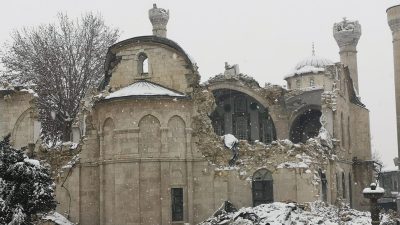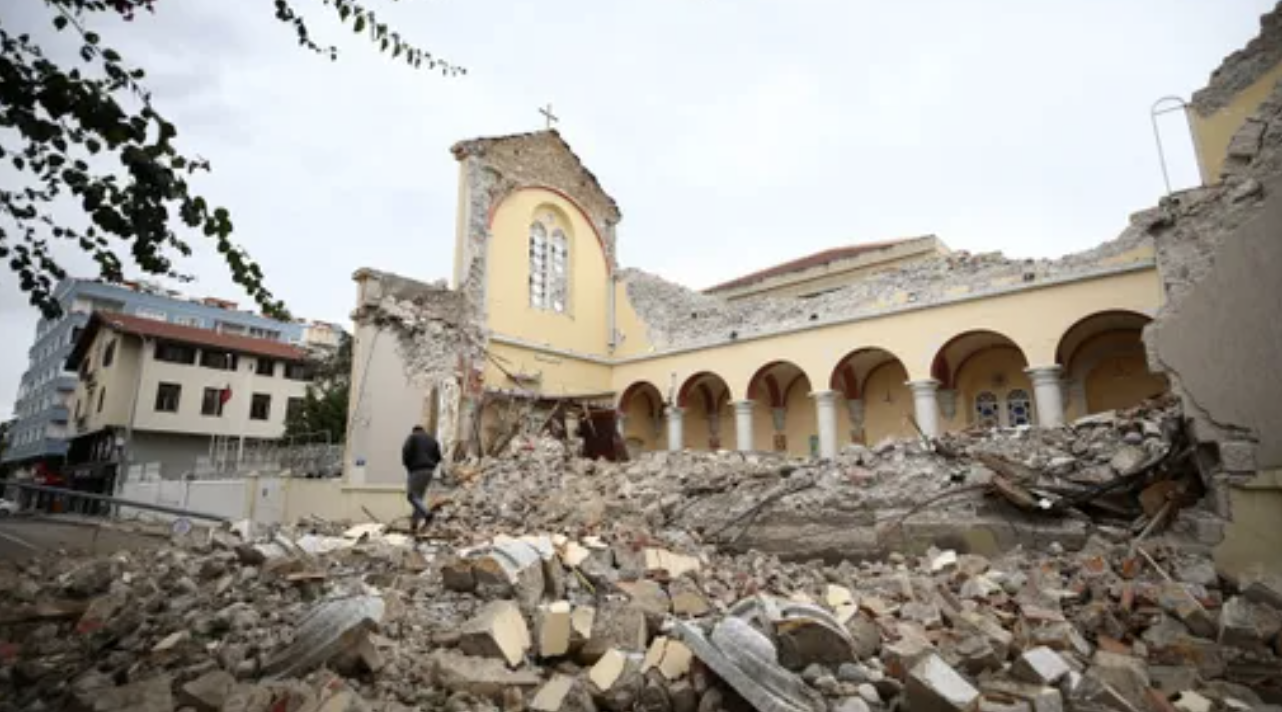Turkey-Syria Earthquake: Historic Mosques and Ancient Landmarks Reduced to Rubble
The earthquake damaged many ancient monuments including Turkey's Gaziantep castle, Yeni Mosque, the Latin Catholic Church and Syria's ancient Aleppo citadel

All Global Research articles can be read in 51 languages by activating the Translate Website button below the author’s name.
To receive Global Research’s Daily Newsletter (selected articles), click here.
Follow us on Instagram and Twitter and subscribe to our Telegram Channel. Feel free to repost and share widely Global Research articles.
***
The catastrophic 7.8 magnitude earthquake, which has left thousands of people dead in Turkey and northwest Syria, has also destroyed several of the region’s historical monuments that had survived for centuries.
The earthquake, which has claimed the lives of at least 4,000 people in both countries, devastated sites in the Turkish regions of Gaziantep and Malatya and the Syrian province of Aleppo.
After Monday’s initial earthquake, the 2,000 year-old Gaziantep castle was heavily damaged, with many of its walls and watch towers reduced to rubble.
Known locally as Gaziantep Kalesi, the historic stone castle was first constructed as an observation point by the Hittite Empire during the second millennium BC.
The castle was expanded into a major fortification and then used in the second and third century AD by the Roman Empire.
Photos shared online showed the castle with its iron railings collapsed, meanwhile the walls and minaret of the 17th century Sirvani Mosque, which sits beside the castle, were levelled.
Yeni Mosque
Several of the walls of the 17th century Yeni Camii (New Mosque), located in Turkey’s southeastern city of Malatya, collapsed after the initial quake on Monday.
The mosque, which was made of stone and built in traditional Ottoman style, was restored last year and open for regular worship.
As the earthquake struck at 04:17 local time, it is unclear if anyone was in the building at the time of the quake.
The mosque was damaged in previous earthquakes and was flattened in March 1894 before being reconstructed. It was then damaged again in the 1964 Manyas earthquake.
Latin Catholic Church
The Latin Catholic Church, located in the Iskenderun district of Hatay province, was heavily damaged according to photos shared on social media.
Only the arches and walls of the church were left standing, while buildings nearby were reduced to rubble.

Only the arches and walls of The Latin Catholic Church in Iskenderun district of Hatay province, Turkey, were left standing (Screengrab/Twitter)
The church was particularly important for the local Catholic community, who marked Holy Week at the place of worship every Easter.
According to official records, it was built between 1858-71, and reconstructed in 1901 after sustaining fire damage.
Aleppo’s ancient citadel
Syria’s ancient Aleppo citadel, considered to be one of the oldest and largest castles in the region, was heavily damaged in Monday’s initial quake.
The entrance to the fort was heavily damaged while high walls which make up the medieval castle were reduced to rubble.
Parts of the dome of the Ayyubid mosque inside the citadel also fell off.
Thought to have been built around the 3rd millennium BC, the citadel was repaired and conserved in the early 2000s, and was a key tourist landmark.
The citadel is part of the Ancient City of Aleppo, which has been listed as a Unesco World Heritage site.
The Margat castle, also known as the al Marqab castle in Arabic, located in Baniyas, northwest Syria, was also impacted by the quake.
The castle was a Crusader fortress, and tremors have caused its circular towers to crumble.
*
Note to readers: Please click the share buttons above. Follow us on Instagram and Twitter and subscribe to our Telegram Channel. Feel free to repost and share widely Global Research articles.
Featured image: Many of the walls of the 17th century Yeni Camii Mosque in Malatya, Turkey, collapsed after the initial quake on Monday (Daily Sabah/DHA Photo)

